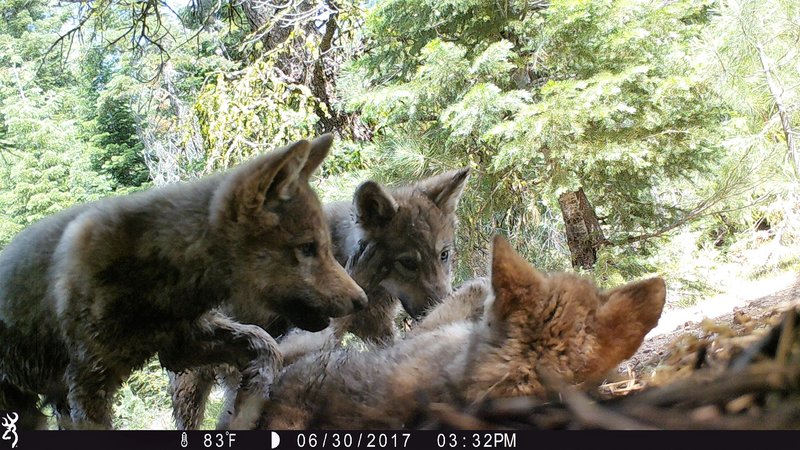
CALIFORNIA – The California Department of Fish and Wildlife’s (CDFW) quarterly Wolf Management update reported that three out of 10 wolf packs produced pups this year, raising concerns for a wolf advocate.
“Wolf recovery here is still in its infancy, and for recovery to stay on track, there need to be more wolves in more places,” said Center for Biological Diversity senior wolf advocate Amaroq Weiss.
The quarterly report tracks reproduction, movements, and livestock interactions.
It found that out of the active wolf packs – Ashpan, Beyem Seyo, Diamond, Harvey, Ice Cave, Ishi, Lassen, Tunnison, Whaleback, and Yowlumni – the Beyem Seyo pack produced 6 pups, Harvey produced 7 pups, and Whaleback 9 pups.
The center noted that previously, the Lassen pack had litters each year from 2017 to 2024 and the Yowlumni pack had litters in 2023 and 2024.
Monitoring wolf presence and pack dynamics
Biologists use camera traps, ground surveys, scat collection, and genetic analysis to monitor wolf presence and pack dynamics. Public sighting reports also aid monitoring efforts.
During Q2 2025, a male wolf from the Beyem Seyo pack dispersed into Oregon. A female Beyem Seyo wolf traveled hundreds of miles south to join the Yowlumni pack in Tulare County.
Two unidentified wolves were spotted separately in Kern County’s Tehachapi Mountains.
Multiple confirmed and probable livestock losses occurred in Beyem Seyo pack territory. From April to June, CDFW met with livestock producers, county officials, and conservation groups to discuss wolf management and mitigation.
Wolves returned to California in 2011
Wolves are fully protected under federal and California endangered species laws.
They returned to California in 2011 when OR-7, a radio-collared wolf from Oregon, crossed into the state after nearly 100 years. One of his daughters founded the Yowlumni pack in Tulare County, according to the Center for Biological Diversity.
Weiss says they hope more packs had litters this year than the department has been able to confirm so far.
“Wolf recovery in California affirms that when adequate legal protections are in place, even a species that’s been gone for nearly 100 years can return,” said Weiss.
RELATED: California unveils new mapping tool to track movements of wolf packs across the state

